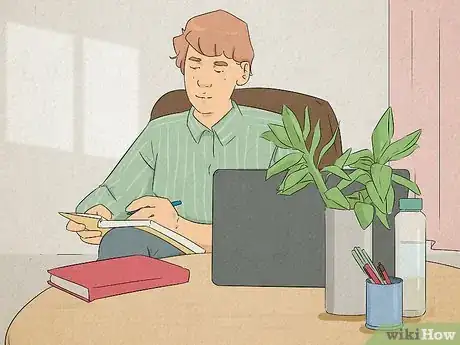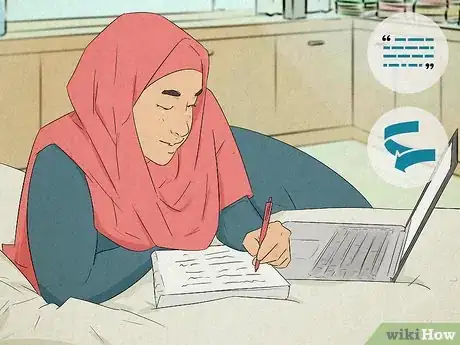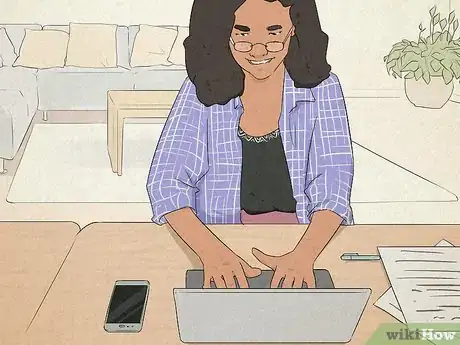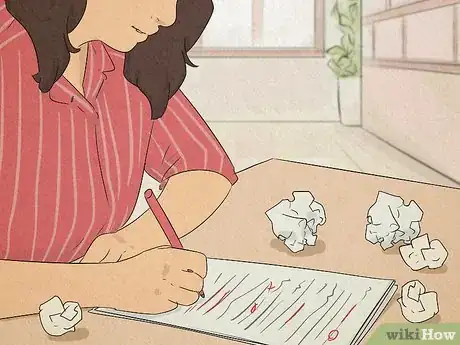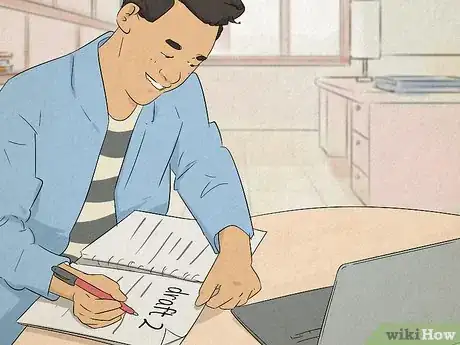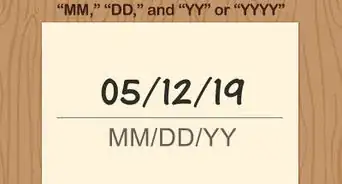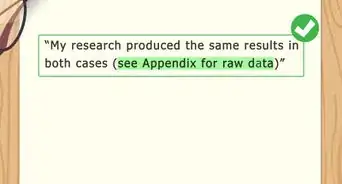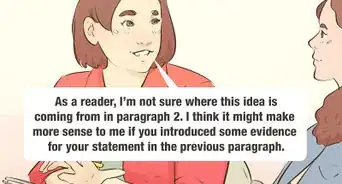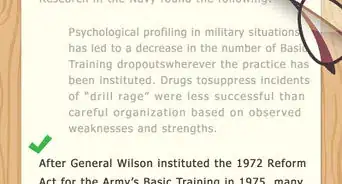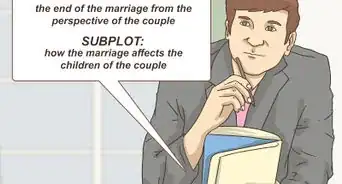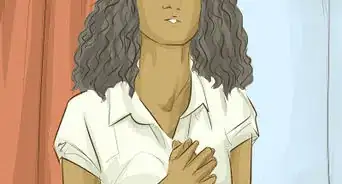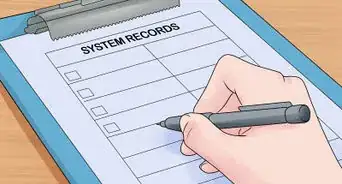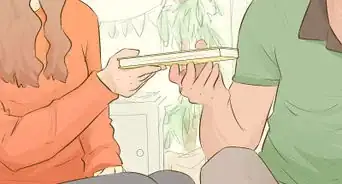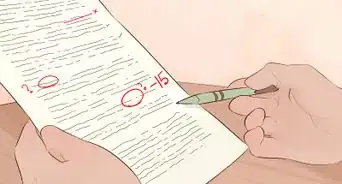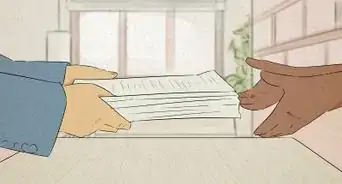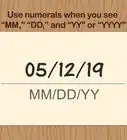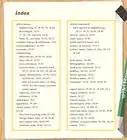This article was co-authored by wikiHow staff writer, Hannah Madden. Hannah Madden is a writer, editor, and artist currently living in Portland, Oregon. In 2018, she graduated from Portland State University with a B.S. in Environmental Studies. Hannah enjoys writing articles about conservation, sustainability, and eco-friendly products. When she isn’t writing, you can find Hannah working on hand embroidery projects and listening to music.
This article has been viewed 25,409 times.
Learn more...
If you’ve ever read a short story that felt a little lacking, you’ve probably considered rewriting it yourself. There are tons of short stories out there that have great potential, but they might just need a little extra boost. That’s where you come in! Get your creative juices flowing to revisit an old short story and breathe new life onto the page.
Steps
How do you reimagine a story?
-
1Keep the characters recognizable. Someone who reads your reimagined story should be able to tell who the characters are. Feel free to change a few things about them, but don’t switch their personalities completely.[1]
-
2Add commentary on the original story. What is your version saying about the old version? Are you telling the story from someone else’s perspective? Are you shedding light on an issue that wasn’t explored in the original version? Try to circle back to the original story at some point in your new one.[2]Advertisement
-
3Let your story stand on its own. While people should be able to recognize the original story, yours should engage the audience all by itself, too. Think about someone who hadn’t read the original story you based yours off of. Would they still understand it? Would they get the overall message?[3]
How do you write a modern retelling of a story?
-
1Make the dialogue realistic. Characters from stories set in older times might have a more formal way of speaking. If you’re going to put your characters into modern day, make sure they sound normal and natural. You don’t have to include a bunch of slang words (in fact, that can be a little jarring), but make sure your characters speak to each other like you’d expect to hear someone talk today.[4]
-
2Put a twist on classic events. Your story should mirror the original one, but you don’t want it to be too predictable. For instance, if a character in the original dies by poison, have them get in a car crash instead. If a character in the original sets off on a long journey through the mountains, have them go backpacking through Europe in your version.[5]
How do you write a classic story?
-
1Create memorable characters. Each of your characters should have their own personalities, flaws, and appearances. If they’re too similar, they might not be diverse enough to be remembered—and that can muddle things for your readers.[6]
-
2Make the story feel timeless. Tons of classic stories are set decades or centuries ago, but we can still relate to them. Pick something that a lot of people can relate to, like love, sadness, anger, greed, or loss of a loved one, and write about it! That way, if someone read your story 100 years in the future, they would still like it and empathize with the characters.[7]
-
3Leave room for interpretation. Try not to tell the reader what they should think about your story or the characters in it. Leave the underlying message and the theme ambiguous so that anyone can interpret it on their own. That way, your audience will think about your short story, even when they’re done reading.[8]
How do you write someone else’s story?
-
1Do your research. If you’re writing about someone else, you need to act like a journalist. Try to interview your subject if you can, or find high quality sources about their life online. Whenever possible, look for primary sources, like photos, public records, or journals to verify the story.[9]
-
2Make the story personable. It’s easy to write about someone else and simply give a timeline of events. However, if you really want your story to make an impact, try to present the person’s life to the reader like you’re talking about an old friend.[10]
How do you edit a short story?
-
1Check the plot. Even short stories need a concrete beginning, middle, and end. Usually, readers want a resolution—even if the ending is ambiguous, you should avoid leaving your audience on a cliffhanger. Double check that there’s an inciting incident or a conflict within your story.[11]
-
2Revise it for clarity. Read your story out loud to make sure everything makes sense. If the characters speak, it should be clear who is talking and when. If the characters move around, make it clear to the reader where they are and what’s going on around them.[12]
-
3Edit your grammar and punctuation. A simple mistake can really throw off your entire story. Go through everything with a fine-toothed comb and double check your spelling, grammar, and punctuation for errors. It might be helpful to read the story out loud so you can’t skim past any mistakes.[13]
Community Q&A
-
QuestionWhat are a few examples of short stories to rewrite?
 wikiHow Staff EditorThis answer was written by one of our trained team of researchers who validated it for accuracy and comprehensiveness.
wikiHow Staff EditorThis answer was written by one of our trained team of researchers who validated it for accuracy and comprehensiveness.
Staff Answer wikiHow Staff EditorStaff AnswerTry rewriting stories from famous authors, like Jack London, Shirley Jackson, or Mark Twain. If you're a fan of classic horror, go for something by Edgar Allen Poe or W.W. Jacobs. You can also just search "short stories" to find one that catches your eye!
wikiHow Staff EditorStaff AnswerTry rewriting stories from famous authors, like Jack London, Shirley Jackson, or Mark Twain. If you're a fan of classic horror, go for something by Edgar Allen Poe or W.W. Jacobs. You can also just search "short stories" to find one that catches your eye! -
QuestionHow can I get someone to help me on the editing part? I have so many scripts for submission.
 Tom De BackerTop AnswererFirst, you will need to finish your own draft. Get the text to a point where you think it's "OK". Next, make a list of things you expect this person to do: only spellchecking, or logical omissions too, improving sentence structure, as well as overall arc of the storyline? Find professionals in your area who provide this service. You could even call the newspaper for a list of freelance editors; those people can definitely help you.
Tom De BackerTop AnswererFirst, you will need to finish your own draft. Get the text to a point where you think it's "OK". Next, make a list of things you expect this person to do: only spellchecking, or logical omissions too, improving sentence structure, as well as overall arc of the storyline? Find professionals in your area who provide this service. You could even call the newspaper for a list of freelance editors; those people can definitely help you.
References
- ↑ https://www.writersdigest.com/writing-articles/tips-writing-novels-based-on-classic-fiction
- ↑ https://www.writersdigest.com/writing-articles/tips-writing-novels-based-on-classic-fiction
- ↑ https://www.writersdigest.com/writing-articles/tips-writing-novels-based-on-classic-fiction
- ↑ https://austenauthors.net/retelling-the-classics/
- ↑ https://austenauthors.net/retelling-the-classics/
- ↑ https://www.nownovel.com/blog/how-to-write-a-classic/
- ↑ https://www.nownovel.com/blog/how-to-write-a-classic/
- ↑ https://www.nownovel.com/blog/how-to-write-a-classic/
- ↑ https://nonfictionauthorsassociation.com/bringing-someone-elses-story-to-life-by-katrina-shawver/
- ↑ https://nonfictionauthorsassociation.com/bringing-someone-elses-story-to-life-by-katrina-shawver/
- ↑ https://thewritepractice.com/how-to-edit-your-story/
- ↑ https://thewritepractice.com/how-to-edit-your-story/
- ↑ https://thewritepractice.com/how-to-edit-your-story/
- ↑ https://www.youtube.com/watch?t=273&v=ae61kGNpQPs&feature=youtu.be
